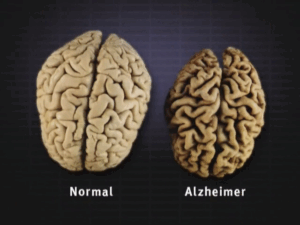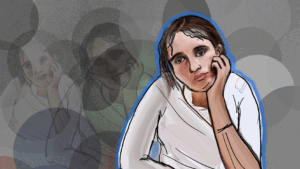Exploring the science behind sleep disorders
It’s three o’clock in the morning when your friend barges into your room. They are muttering something unintelligible to themselves and walking aimlessly, but you are not startled. In fact, this happens almost every night at the same time. You suspect your friend has sleepwalks and sleeptalks, also known as somnambulism and somniloquy, which, according to Stanford University, nearly 3.6% of adults in the US are prone to (1). Both sleepwalking and sleeptalking are categorized as parasomnias, abnormal experiences that can occur during sleep. Other parasomnias include night terrors (or recurring nightmares), bedwetting, and sleep-related hallucinations (2). But what actually causes these nocturnal wanderings and disruptive behaviors, and why can your friend not remember anything the next morning? While researchers have not identified a root cause of parasomnia, there are several factors that can trigger these episodes. But first, let’s dive into the fundamentals of sleep.

Example of sleepwalking at night
According to Johns Hopkins Medicine, society before the 1950s believed that sleep required an inactive brain. However, as research has progressed, scientists have discovered that the brain is most active and engaged when you sleep. The body experiences two types of sleep: REM (Rapid Eye Movement) and non-REM. The first phase is non-REM, which consists of 4 stages. The first stage is being awake, becoming drowsy, and falling asleep. This first stage transitions into a second stage of light sleeping, where the heart rate drops, your body temperature lowers, and breathing is regulated. This occurs because your muscles relax and require less energy. The third and fourth stages of non-REM consist of deep sleep, which promotes physical repair and immune function. Then, the body will transition into REM. Just like the name suggests, your eyes will rapidly move behind the eyelids, and the body becomes temporarily paralyzed (3). Most vivid dreams occur during REM. This cycle repeats until your circadian rhythm releases cortisol, a stress hormone, to wake the body (4).
Just like the cycles of sleep, parasomnia occurs when the body cannot properly transition between cycles of light and deep sleep, or non-REM and REM sleep. For instance a person may be partially awake during deeper sleep cycles and not achieve muscle paralysis, allowing them to move around. Parasomnia is also not conducive to conscious memories, which is why people might not remember episodes of sleepwalking or sleeptalking the next morning. In other words, most parasomnia is due to partial muscle or brain activity.

Sleeptalking can sound incoherent
While researchers are still looking into the root causes of parasomnia, genetics, substance abuse, and sleep deprivation are among the common factors (5). According to the Journal of Clinical Sleep Medicine, a high prevalence of the HLA DQB1 genotype (the genetic makeup/variants present in a genetic location) can correlate with frequent parasomnia during non-REM sleep (6).
Suppose you can’t stand being woken up by your parasomniac friend every night. In that case, researchers recommend curating a bedtime routine to regulate the body’s sleep cycle and avoiding caffeine or any stimulants before bed; for more significant episodes of parasomnia, melatonin medication, or other drugs may be prescribed (2). So, make your friend a warm cup of tea every night, read a book with them, or even meditate together; an apple a day won’t keep the doctor away, but sleep might!
Citations:
- Ohayon, M. (2012, May 4). Sleepwalking more prevalent among U.S. adults than previously suspected, researchers said, Stanford Medicine. https://med.stanford.edu/news/all-news/2012/05/sleepwalking-more-prevalent-among-u-s-adults-than-previously-suspected-researcher-says.html
- The Cleveland Clinic. (n.d.) Parasomnias: What They Are, Symptoms, Treatment & Types. https://my.clevelandclinic.org/health/diseases/12133-parasomnias–disruptive-sleep-disorders
- Johns Hopkins Medicine. (n.d.) The Science of Sleep: Understanding What Happens When You Sleep. https://www.hopkinsmedicine.org/health/wellness-and-prevention/the-science-of-sleep-understanding-what-happens-when-you-sleep
- The Cleveland Clinic. (n.d.) Circadian Rhythm: What it is, How it Works, & What Affects it. https://my.clevelandclinic.org/health/articles/circadian-rhythm
- Schneeberg, L., Canapari, C. (2025). Parasomnias, Yale Medicine. https://www.yalemedicine.org/conditions/parasomnias
- Heidbreder, A. Frauscher, Br. et al. (2016, April 15). Not Only Sleepwalking but NREM Parasomnia, Irrespective Of the Type, Is Associated with HLA DQB, Journal of Clinical Sleep Medicine. https://pmc.ncbi.nlm.nih.gov/articles/PMC4795284/#:~:text=In%20summary%2C%20this%20study%20is,the%20work%2Dup%20of%20parasomnias
Images:






Comments are closed.